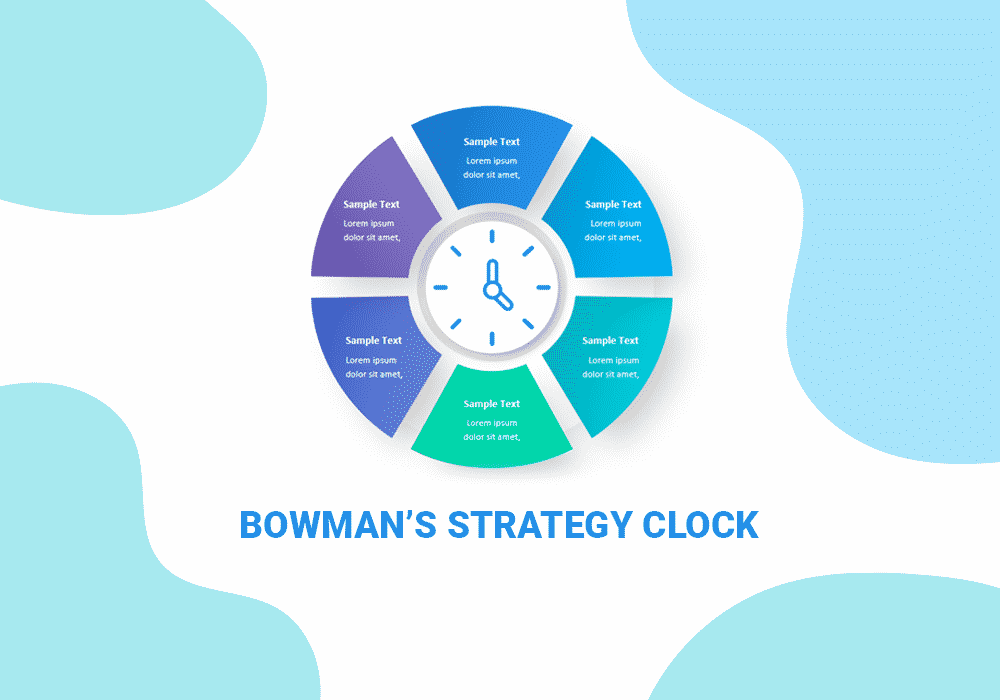Conducting Fit Gap Analysis for Your Organization Explained [+PPT Template]

What is a Fit-Gap analysis?
Functional gaps are common in every organization. You can’t get the desired outcomes from your organization if you neglect these gaps. A fit-gap analysis will identify where gaps functionally exist, how the newly planned system lags, and whether the business requirements for your organization fit or don’t fit according to the requirements. Fit gap analysis primarily determines a plan that fits the business goal and the Gaps that need to be corrected.
Why fit-gap analysis
Fit gap analysis is not only focusing on identifying gaps, but also it works to find out the best practices in line with the organization’s needs and goals. So, the motive behind such actions mainly focusing on day-to-day working systems and operations and how to fix the issues arising from the systems. These issues will be thoroughly assessed to determine efficiency and skillfulness and, finally, whether it is productive according to the organization’s overall purpose. It is known as a gap if your system doesn’t fit to fulfill a given intent. When you find out the system performs well or is enough to achieve an organizational goal, you can call it FIT. However, the real problem comes if you identify the system doesn’t seem able to fulfill your requirements. At this juncture, you should turn out as it is fit for the organization. Here comes the importance of fit gap analysis.
A perfectly executed fit-gap analysis will also benefit you in prioritizing the problems according to their intensity of loss done. The fit gap analysis will clarify issues related to automation, IT, employee skills, human resource management, etc. For example, if your newly erected machinery doesn’t produce items as per the company’s offer, a gap analysis will help find out where the gaps functionally exist.
Editable PowerPoint template for fit gap analysis
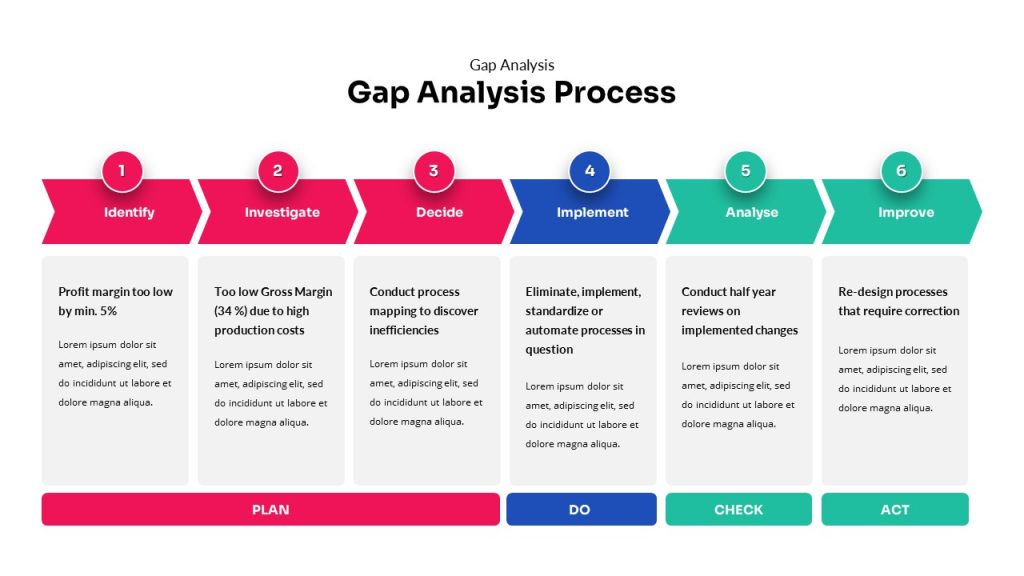
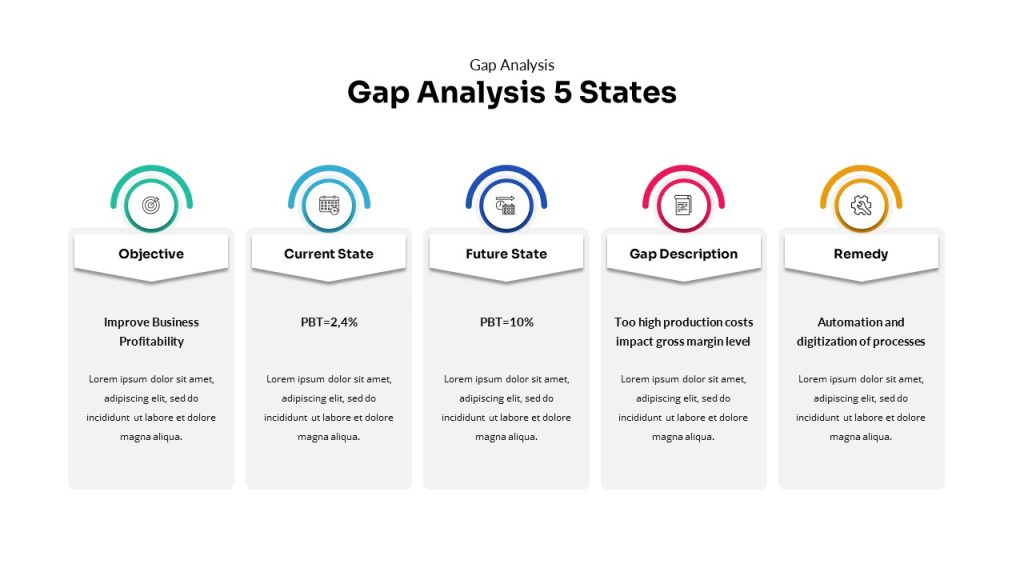
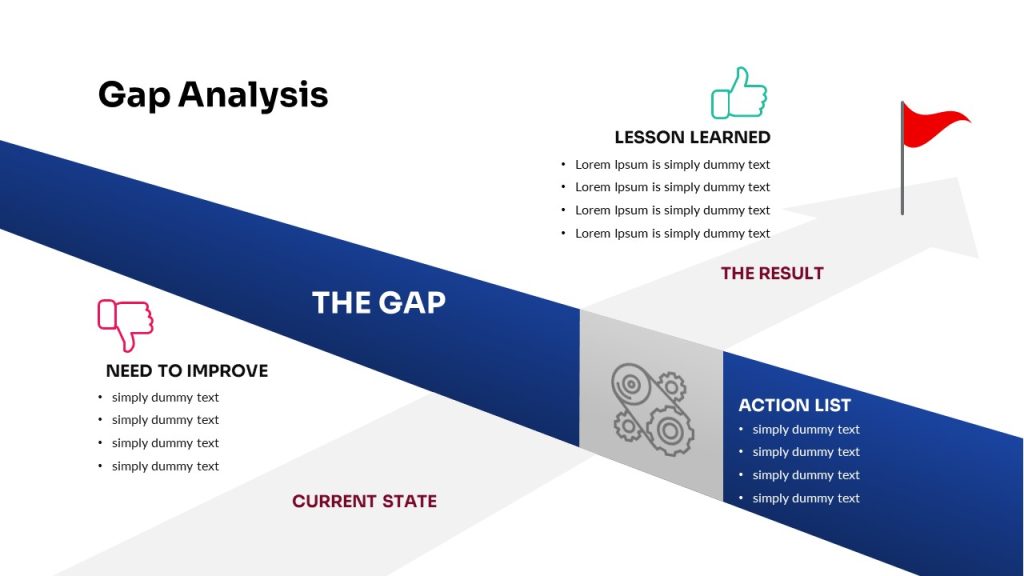
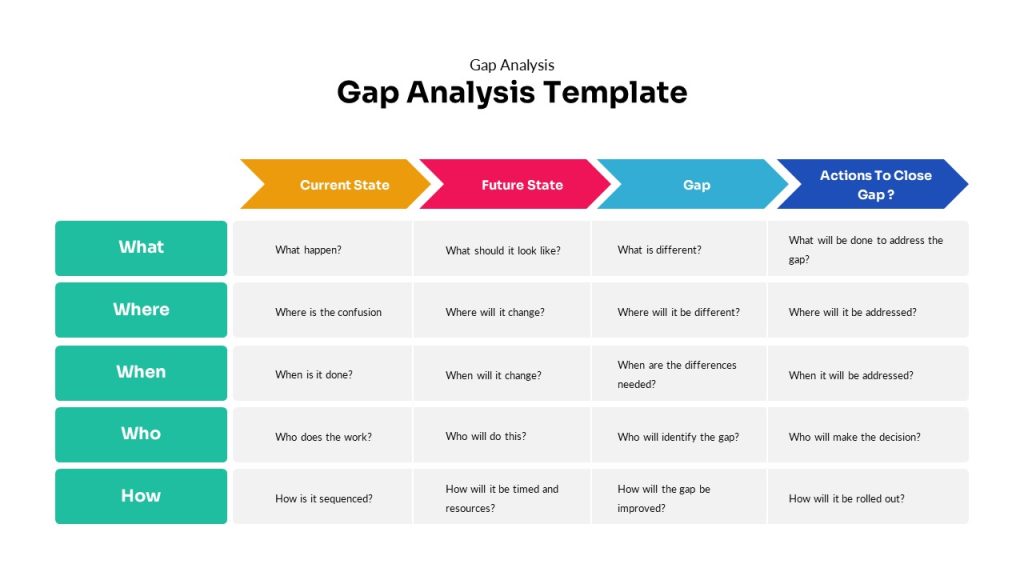
The right time to use fit gap analysis
There is no prescribed time to use a fit-gap analysis. So, if you have noticed any issues, you might need a fit-gap study to fix the problem. However, there may be some common problems that will come persistently in any organization. So, in such a situation, you can do a fit-gap analysis. Let’s have a look at the list below:
- When your ongoing business processes seem to be lagging
- When you find the root cause of the gap
- When you find the gaps are more intensified
- When you see, gaps are slowly mounting up
- When your resource faculties are not able to train properly
- When production loss extends
- When applying change management
- Record information on all the fit-gap features in all systems, such as SAP.
- To determine which systems work according to the organization’s intent.
How to apply a fit-gap analysis?
Identifying issues in process and outcomes may or may not be simple. If you are making ideal-type comparisons, then easy to make changes in the system. The ideal type method is not as scientific; it is the method of creating some ideas related to your issues and discovering the perfect state of a system. This is the only suggestion for your fit gap analysis. But it can be challenging when you get into it. However, you know what could be aligned for ideal outcomes. So, pay attention to the process and detect even minimal issues in them. Let’s have a look at the steps for performing a fit-gap analysis.
Step 1. Go through the existing process
Observe your organization’s work and mark the performance of the main processes that operate on a day-to-day basis. For example, sometimes one big process and the small orbiting process deal with the different labour forces. Perhaps you can identify that the main process might be in lag because of the sub-process not being handled properly.
Step 2. Identify the current outcome
The next step is to look for the results. Scale up what outcomes from the process are given and identify whether they align with your expectation. You need to fix the problem if the outcomes are low degrees. Suppose the results align with your intent; that means you placed your plans appropriately. When you set up the systems or process in an association, you have intended an ideal result for it to give. The whole point of fit- gap analysis is to compare the “ real ” and “ ideal ” issues of the course of action in the association. It measures the performance of a process grounded on this comparison.
Step 3. Identify the gap and report it
It would help if you went for a gap analysis when you figure out a single process or a bunch of processes don’t yield desired results. First, explore why the process is not working properly and what issues you are confronting. Then, after identifying the root cause, you need to report them. This kind of documentation will help you in the coming days if similar issues arise out of processes.
Step 4. Bridge the gap
Once you complete the third step, you know the problem and the factors behind it. Now you can take the necessary measures to overcome. Either you can introduce new management software or appoint a new team with excellent risk management abilities. Perhaps gaps will have come into force since you don’t have an efficient risk management team or strategies. When you implement solutions for existing gaps, it calls a bridge.
Step 5. Maintenance
This is the common step for every organization. If you figure out the problem and provide solutions to the gap, your job doesn’t end. You always offer a bird’s eye on the causes of the gaps and work to find new GAPS and FITS for your organization.
Difference between fit gap analysis and gap analysis
We can simply say gap analysis speaks about the gap between and standard set performed. It is used to find out the shortfall and speak about the further scope of improvement in systems. At the same time, fit gap analysis is a method to identify what system enables the smooth going of the organization and maintains the system well performed. The word fit suggests its entire meaning. You can use PowerPoint gap analysis templates to give a presentation on gap analysis.
Ending note
Fit gap analysis is one of the common techniques to overcome mal-plans and unforeseen system losses. Through this, you can understand what your system is capable of and if you can provide necessary solutions to the gaps or not.
